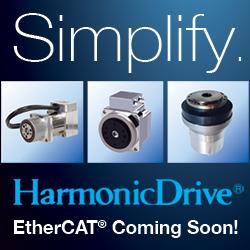Toshiba announces THL SCARA robots
Toshiba Machine announces THL Series of low-cost and lightweight SCARA Robots. The THL Series consists of three SCARA robot models, each uniquely offered at the same price point.
January 17, 2012 - Toshiba Machine announces THL Series of low-cost and lightweight SCARA Robots. The THL Series consists of three SCARA robot models, each uniquely offered at the same price point.
To achieve cost savings, the THL Series is configured with a lightweight die cast aluminum arm, as well as less complex, easy-to-maintain gearboxes and motors. This design also results in a robot up to 50% lighter than existing Toshiba Machine models. A lighter robot can mean further cost savings for system integrators, as the THL Series requires minimal supporting and vibration-suppression elements.
Another benefit to the lightweight construction of this series is reduced energy-consumption. The THL Series consumes up to 50% less power than conventional robots, contributing to improved overall efficiency of the entire system.
THL Series SCARA Robots include the THL500, THL600 and THL700 with arm lengths of 500mm, 600mm and 700mm respectively. Each THL offers a payload of 10kg. Cycle times (with 2 kg load) are .45s for the THL500 and THL600, and .50s for the THL700. All THL Robots feature a working envelope of 4 axes, with a Z-axis rotation of 360º. Maximum speeds range from 6.3m/s to 7.9m/s overall.
Toshiba Machine's TSL 3000 Controller was developed exclusively for the THL Series. It includes USB compatibility as standard, while Field Bus is available as an option. Storage capacity totals are approximately 6400 point + 12800 steps. The programming language is SCOL (similar to BASIC).
Featured Product

Harmonic Drive - Coming Soon! Integrated Actuators with EtherCAT
The IDT Series is a family of compact actuators with an integrated servo drive with
CANopen® and, coming soon, EtherCAT. With high torque, exceptional
accuracy and repeatability, these actuators eliminate the need for an external drive and
greatly simplify cabling.
